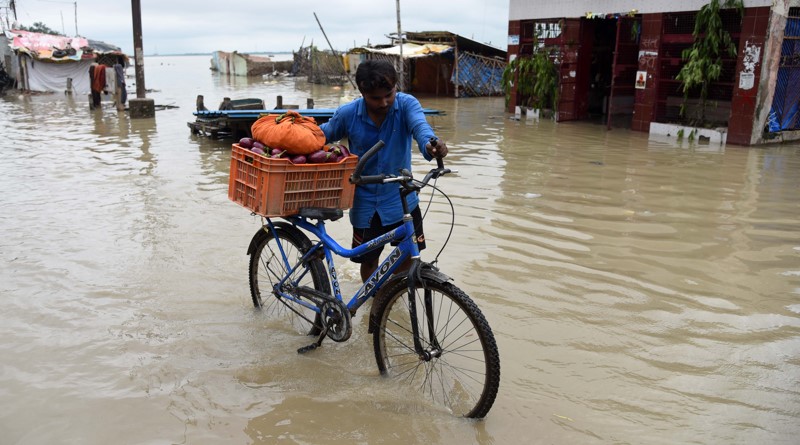Scientists create functional climate network to gauge extreme rainfall events

With exploration of extreme rainfall patterns becoming an issue of global societal importance, a group of researchers in Germany have proposed using a complex-network-based clustering workflow to search for synchronized structures of extreme rainfall events within the context of atmospheric chaos.
By doing this, the group has been able to reconstruct a functional climate network to encode the underlying interaction of the climate system. Clusters on the network revealed regions of similar climatological behaviors. This means extreme rainfalls within different locations are not independent of each other but have a certain degree of similarity.
The Sixth Assessment Report of the Intergovernmental Panel on Climate Change, released in February 2022, had flagged precipitation extremes as very likely to become more frequent in most locations.
Monsoons describe atmospheric circulation seasonal changes, and while they are distributed on different continents, their occurrences are usually accompanied by precipitation extremes.
The global picture of the interdependence patterns of extreme-rainfall events (EREs) still needs to be further explored. “To this end, we propose a top-down complex-network-based clustering workflow, with the combination of consensus clustering and mutual correspondences. Consensus clustering provides a reliable community structure under each dataset, while mutual correspondences build a matching relationship between different community structures obtained from different datasets. This approach ensures the robustness of the identified structures when multiple datasets are available”, the researchers noted in a recent article.
“Although global-scale atmospheric circulation within the tropics and subtropics forms connections between different monsoons, they are essentially driven, synchronized, and coordinated by the annual cycle of solar radiation,” said Zhen Su at Potsdam Institute for Climate Impact Research and Humboldt Universität zu Berlin.
“Synchronization can also occur between extreme rainfalls, even when they are not occurring within monsoon regions.”
This means extreme rainfalls within different locations are not independent of each other but have a certain degree of similarity.
“In this regard, it still remains unclear what the global-scale synchronization pattern of extreme rainfall will look like, for example, during the summer season of the Northern Hemisphere,” Su said.
“We aim to find the answer from observational precipitation data.”
The global synchronization of extreme rainfall has two main distributions with independent temporal and spatial characteristics. “One occurs mainly from early June to mid-July,” said Su. “The other happens primarily from mid-July to late August.”
Between these periods, a monsoon “jump” occurs — a northward movement of the rain belt of monsoons with time. With this monsoon jump, the spatial distribution of synchronization also undergoes a northward shift. The researchers noticed both of the spatial distributions cover monsoon regions and also oceanic and inland areas.
“The synchronization structure of extreme rainfall tells us how the climate system is interconnected on a global scale,” said Su.
“It also provides insights for improving corresponding interaction processes in general circulation models, which are mostly used for estimating the state of our future climate.”
Precipitation variability of monsoons affects over two-thirds of the world’s population, and regional monsoons have their own characteristics due to specific land–ocean and topographic conditions.



